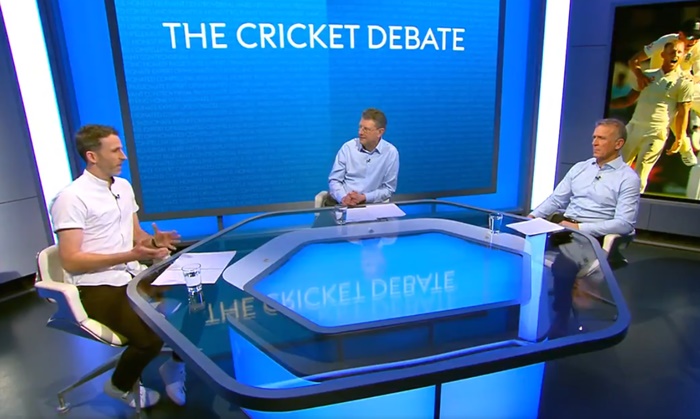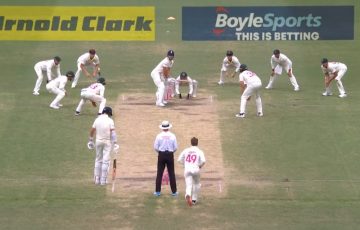Whenever a Test is decided late on the fifth day, there’s much talk about how that kind of tension and excitement wouldn’t happen with four-day Tests. It’s half true. This is why.
If you move a deadline, you don’t negate it. Even if a Test match has no fifth day, there’s still a final day.
A four-day Test rules out tense fifth day finishes, but it also creates more opportunities for teams to fight for a draw where they would otherwise have been steamrollered given more playing time. Those sorts of finishes can be just as exciting.
Teams would also play differently. They’d respond to the shorter timeframe. You’d still get plenty of tense wins on the final day.
But it wouldn’t be quite the same.
So why wouldn’t it be quite the same?

The more you invest, the bigger the payoff. We’ve repeatedly made the point that the duration and epic nature of Test cricket are its unique selling points.
Four-day Tests involve an increase in the volume of cricket played each day. In terms of actual cricket played, they can kind of be viewed as 4.5 day Tests.
But even if they somehow managed to cram five days of overs into four days, you’d still lose something because ‘overnight’ is also an important part of a Test match.
For players the break between the end of one day’s play and the start of the next is a chance to take stock, ruminate and worry. That’s an emotional investment.
For fans, that same break is a chance to do much the same. We talk about what’s happened and what might happen. We watch highlights and discussion shows. We read articles about the game. That too is an emotional investment.
Overnight is when a Test match markets itself. It’s when word gets out. It’s when people with only a passing interest in the game hear that something big is happening. Overnight is when cricket’s natural viral marketing happens.
Nothing physically happens overnight, but it’s when we process things and each night of doing this increases what we – players and fans – have vested in the match.
Quite often matches peter out and all that investment gets pissed away. But sometimes things get tense and those games only feel more tense because of the time you’ve invested in them.
There are 120 hours in a Test match.
First published in January 2020.
If you like the features we do here on King Cricket and you’d like us to do more of them, please flip us a coin or buy us a pint each month via Patreon. The more we get, the more of this sort of stuff we can do. Cheers.
You may also want to sign up to get our articles emailed to you. (You can do that for free without becoming a patron.)






This is a much better argument against 4 day Tests than the “look at this tense 5th day finish” argument, which – as some people have advanced it – seems to assume that 4 day Tests would mean that the result of every Test would just be the same as it would have been if the teams had intended to play for 5 days but the 5th day was rained off.
Overnight is when most casual observers take stock of the game situation.
Think of the thousands of people locked out of Old Trafford in 2005 – there wouldn’t have been anywhere near as much interest in a format where people didn’t have the evening of the 4th day to assess the situation.
That Old Trafford situation was one of the things I had in mind but I couldn’t work it in.
Gosh bless the comments section and all those who comment within it.
AP is, of course, correct that the assumption that a 4 day test is just a 5 day test with a day sawn off is crass. Teams will adapt. And as KC says it will plumpen the carrot of the draw for a team getting badly beaten in the early part of the match, but there may be another edge to that sword (if you’ll excuse the mixed, or at least nested, metaphors) in that there may be motivation for teams slightly behind on first innings to shut up shop for the draw earlier, especially when ahead in a series.
But my real concern, besides the excellent point about overnights, is will some of the variety in narratives be lost. In a 5 day test we can have the Indian Accellerator (500-500-200-120) the English Nicely Balanced (330-340-280-250), The Innings stuffing (600-250-150 FO) the Single Exceptional Innings (See Capetown Scorecard) to name but a few of the near infinite variety which tests serve up. I worry that in 4 day tests, some of these varieties will die off entirely and an increasing number will be dependent on the timing of 3rd innings declarations. Variety of stories is the aspect of test cricket than none of the shorter forms can compete with, and a large part of my love for it. None of the proposed advantages seem the compensate for its diminution.
The whole point of the shorter formats is to engineer drama. Conversely, the whole point of the longest format is that the drama evolves naturally, bringing greater highs but also more disappointments.
Problem is, the two are linked and anything that reduces the scope of the game minimises both. That’s not really a price worth paying when we already have shorter formats that provide lesser highs with greater frequency.
Did anyone catch Jos Buttler’s sledging yesterday? I’ve always thought of ‘knobhead’ as a particularly Mancunian word. So it’s nice to see Jos using the vernacular of his adopted county.
But on a serious point, is knobhead/knob head one word or two?
I would go with knobhead, because when I read it, my internal voice says knob head in a more staccato way and with a properly aspirated h on the second word. Whereas knobhead, properly pronounced knob’ead, flows better.
I do like it as an insult though personally have limited opportunity to use it in daily life.
Knob’ead deffo one word.
I googled to see if knobhead was a particularly Mancunian word. Although, there’s a ‘Knobhead’ peak in Antarctica, one word.
As KC says – we already have a number of shorter formats – so why we need to shorten Tests is beyond me. Tests are tests for a reason, and it’s the same reason why World Championships (or their equivalent) in different sports often boast the longest formats compared to other formats used in regular tournaments: to determine the best over an appropriately challenging timeframe.
I get to see very little Test cricket in real time but getting the overnight snapshot of the Test – even just seeing the scorecard as it stands at the close of each day’s play – tells me some sort of an evolving story. So to miss out on one of those four interim snapshots would be to reduce the enjoyment by, well, a whole quarter, if my maths is correct (assuming all five days are used).
Also, stuffing 4.5 days worth of cricket in to 4 days means more overs per day, at a time when many teams seem to struggle to get through their current allocation as it is, not to mention light problems in some countries at certain times of the year (and those light-meter-trigger-happy umpires as well). Just leave well enough alone!
I agree with everything you say in this piece…
…until you get to the bit where you say that a test match is 120 hours.
It isn’t. By your own “overnight” reasoning, there are four overnights in a five day test, which makes the whole thing roughly 105 hours max.
There are only four overnights in a four day test. Even adding on one hour for the extended play, that is still 82 hours max.
Proponents of the four day test argue that you will still be getting up to 400 overs in four days rather than the 450 overs of a five day test, so they argue that you are only down 11%.
But the “hours including overnights” argument indicates that the four day test is 22% shorter than the five day test.
I really like four day cricket and basically restored my childhood interest in county cricket once the county championship went up from three to four days.
I have no problem with “second string” test matches being played over four days, but the second string teams should be aspiring to be good enough to join the ranks of the test match sides that justify five day tests. Without the existence of five day tests, I think you are simply diluting an excellent sporting product for no sensible reason.
Of course, I meant to say, only THREE overnights in a four day match.
You’re missing the overnight BEFORE play starts.
I don’t think the overnight before play starts counts. Or to put it another way, the overnight before play starts is “a thing” for any match in any sport. It’s the “in match overnights” that make your favoured versions of your favourite sports so enticing.
Your argument is stronger if you accept my position on this, but you might prefer the craik to having a stronger argument.
…or even craic…
Change the LBW rule to allow “struck outside the line of stumps”/”pitched outside leg” to be out. Get rid of the bouncer rule. Stop covering the pitches overnight/when it rains (do cover the run up areas well, though).
Then we don’t need to worry about how to shorten matches, playing conditions will take care of that.
(I was going to say “ban the use of light meters” but I think that probably comes across as rather blood thirsty)
Do away with pads, helmets and boxes. That should spice things up a bit.
You could argue that back in the pre-helmet days, you needed a better technique to cut it as a batsman. If you weren’t good enough, you would get hit at school level, where it would probably hurt, but the bowling wouldn’t be fast enough to kill you. At that point you either improved or stopped playing. Don’t think there’s anything wrong with that.
Tough on the bowlers who could ‘make it’ without having any kind of batting technique whatsoever.
You could argue that they (the bowlers) probably don’t last long enough at the crease (and don’t need to either).
With you on deliveries pitching outside leg stump and LBWs…
Playing to the leg side was considered impolite, and a leg glance was downright rude. I think this rule comes from there somewhere. There’s no ‘blind spot’ business.
Jimmy’s rib…
…as in, a tour-terminating torso injury…
…Jimmy’s not been teasing someone in a jocular fashion or anything like that.
Two thumbs up for 4 days for ‘second string’ Tests.
Going further, we need a second division playing red ball cricket. I’d like to see say, Ireland, Netherlands, Afg and Nepal play more 4-day cricket, if there’s any chance these 11% (22%) make it more viable.
Don’t believe the Dutch board have any ambition re Test cricket as they don’t see that there would be audience / commercial appetite for it, and it wouldn’t serve as a way of growing the game there. Though they did do okay in the four-day ICC Intercontinental Cup, coming 3rd (behind Afg and Ire) in what seems to have been its final edition.
I’d like to see the Intercontinental Cup revived, though would suggest there’s little virtue dressing it up as “four-day Test cricket” since the quality of most matches is clearly below that standard. Four-day first-class matches targeted for the countries that have the capacity to commercialise it and aspirations to full ICC membership in the long run is something that’s missing in the ICC programme at the moment though, and I don’t think it would hurt for Afg and Ire to play some matches against countries in the tier below them – their schedules aren’t packed out at the moment, and it would give the likes of Nepal a sighter for where they’ve got to get to (and the ICC a much clearer idea of how competitive they are). Without the Intercontinental Cup or a replacement there’s sadly no development route to Test cricket. Moreover, the new ICC membership criteria have effectively delinked full membership with Test status, which is a concession that the growth of the professional game in new countries may bypass Test cricket altogether!
I don’t much like the*idea* of 4 day tests either, but I’m open to the possibility that it might surprise me. The reason laid out here seems like some romantic idealization really, but it could also be a cultural thing. Where I live we don’t really congregate in bars and discuss sport, so there’s that.
Also I live in a dry state in India. It hurts. Every single day, it hurts. It hurts so bad.
This is good https://www.theguardian.com/sport/blog/2020/jan/07/icc-plan-end-five-day-tests-best-about-cricket?CMP=Share_iOSApp_Other
Superb. Thanks for sharing. The best quote (of many) therein, for me, is:
“…five days rarely happens in practice. But the entire tone and texture of the game flows backwards from its possibility.”
‘Ah, the Guardian! The newspaper that hates other newspapers.’ I’ve been trying to work ‘the thick of it’ in it, but to no avail.
Gosh bless the comments section and all those who comment within it.